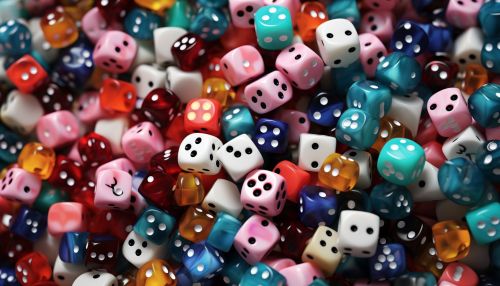Probability
Introduction
Probability is a branch of mathematics that deals with the analysis of random phenomena. The central objects of study in probability theory are events, samples, and random variables. The event is an outcome or defined set of outcomes of a random experiment or process, a sample is a specific outcome of such an experiment, and a random variable is a function that assigns to each element of the sample space a real number.
History
The theory of probability has its roots in attempts to analyze games of chance by Gerolamo Cardano in the sixteenth century, and by Pierre de Fermat and Blaise Pascal in the seventeenth century (for example the "problem of points"). Christiaan Huygens published a book on the subject in 1657.
Mathematical Treatment
Probability theory is applied in everyday life in risk assessment and in trade on commodity markets. Governments apply probabilistic methods in environmental regulation where it is called pathway analysis. A good example is the effect of the perceived probability of any widespread Middle East conflict on oil prices - which have ripple effects on other parts of the economy. Probabilities are used in the social sciences in analyzing decision making and risk taking.
Probability Theory
Probability theory is the branch of mathematics concerned with probability, the analysis of random phenomena. The central objects of probability theory are random variables, stochastic processes, and events: mathematical abstractions of non-deterministic events or measured quantities that may either be single occurrences or evolve over time in an apparently random fashion.
Probability Space
In probability theory, a probability space or a probability triple is a mathematical construct that models a real-world process (or “experiment”) consisting of states that occur randomly. A probability space is defined by a sample space, an event space and a probability function.
Random Variables
In probability theory, a random variable is described informally as a variable whose values depend on outcomes of a random phenomenon. The formal mathematical treatment of random variables is a topic in probability theory.
Probability Distributions
In probability theory and statistics, a probability distribution is the mathematical function that gives the probabilities of occurrence of different possible outcomes for an experiment. It is a mathematical description of a random phenomenon in terms of its sample space and the probabilities of events.
Conditional Probability
In probability theory, conditional probability is a measure of the probability of an event occurring, given that another event has already occurred. If the event of interest is A and event B is known or assumed to have occurred, the conditional probability of A given B is usually written as P(A | B).
Bayes' Theorem
In probability theory and statistics, Bayes' theorem (alternatively Bayes' law or Bayes' rule) describes the probability of an event, based on prior knowledge of conditions that might be related to the event. It serves as a way to figure out conditional probability.
Central Limit Theorem
In probability theory, the central limit theorem (CLT) establishes that, for certain situations, when independent random variables are added, their properly normalized sum tends toward a normal distribution even if the original variables themselves are not normally distributed.
Applications
Probability theory is applied in everyday life in risk assessment and in trade on commodity markets. Governments apply probabilistic methods in environmental regulation where it is called pathway analysis. A good example is the effect of the perceived probability of any widespread Middle East conflict on oil prices - which have ripple effects on other parts of the economy. Probabilities are used in the social sciences in analyzing decision making and risk taking.
See Also


